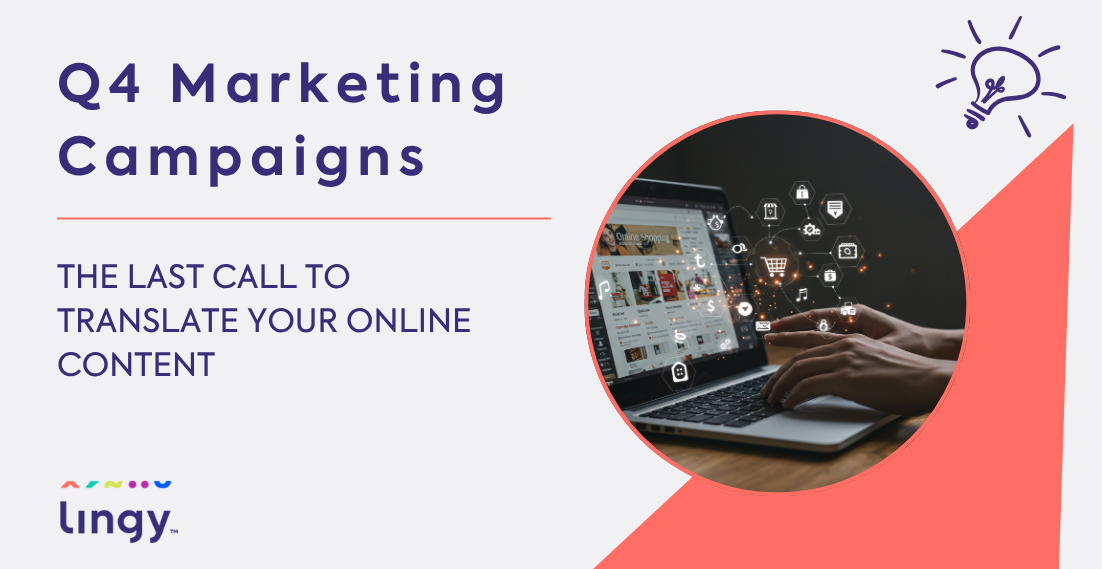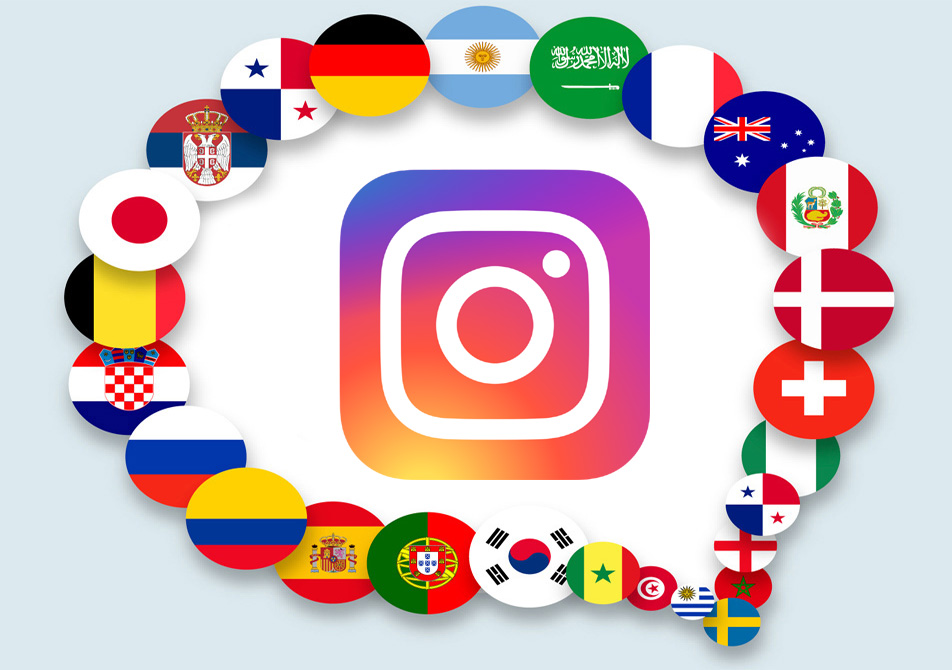6 Tips on Making Your Website Multilingual

It is great to have a website in order to let people know more about your business and to sell your products and services, but wouldn’t it be better if people overseas can browse your website in their native language too?
Having a multilingual website can improve your brand awareness and search engine optimisation (SEO) overseas! Customers will be able to find your website through a search engine much easier by using keywords in their native languages. It often is beneficial to implement a multilingual website but how?
In this blog post, we will give you 6 tips on how to make your website multilingual so that you can capture more of your overseas customers!
Translation for your multilingual website
CMS for your multilingual website
Content Management Systems (CMS) is the solution that you use to maintain your website, the most popular being WordPress by far, followed by Wix and Joomla. There isn’t a best CMS for multilingual websites as they all have different pros and cons, but because of WordPress’ popularity, there is a large number of plugins for you to make your website multilingual and it is easier than using other CMS. The plugins make translating your website much easier and require very little IT skills to use them. For the easiest setup, I would highly recommend WordPress as your CMS.
Use one template and theme
It is important to have a consistent image for your business on your websites. Using one unified theme and template can help you to achieve that easier. It helps overseas customers to receive the same message and user experience across all the available versions of your website. This also makes your website maintenance easier and there is a lower chance for mistakes. Designing a global template can be a little bit tricky at first but it will be less costly in the long run. It is a good idea to build your website using more popular page builders such as Divi or Elementor as they are more commonly supported by the plugins.
Choosing the best plugins for your budget and needs
There are a huge number of plugins available and they each have different functionality and price. But the plugins that you can use might be limited to the CMS that your website is currently using. The most popular plugins for multilingual websites currently are WPML, Polylang and Weglot.
WPML
WPML is one of the most popular plugins for multilingual WordPress websites. It allows users to translate their whole website including posts, themes and plugins. It excels at being compatible with most WordPress themes and plugins which the others are not. This makes website translation and design easier as WPML is less likely to limits the theme and plugins that you can use. It is also considered to be the most stable translation plugin with WordPress. There will be little to no compatibility issues when you want to create a multilingual WordPress website is built using common builders such as Divi or Elementor.
It also supports multilingual e-commerce websites and allows you to set up your multilingual website as a sub-domine or a separate domain. Those two powerful functions separate them from their competitors.
Being able to set up each language version of your website as sub-domains. It helps with your SEO but it also can lead to higher chances of broken links, but it is definitely a welcome option to have when making your website multilingual.
The downside of WPML is technical knowledge is needed to configure your website properly and there you cannot use WPML for free at all.
Price: $79 per year for multilingual CMS and $29 per year for multilingual blogs
Polylang
It is easier to use than WPML thanks to its simple interface. It allows you to easily translate pages, widgets, posts etc. It offers a free version that covers a lot of multilingual websites’ needs and the paid version allows you to set up each language version of your website as sub-domains
Polylang also automatically download the required language packs after you have selected your prefered options in your profile. It is a handy feature that makes things a little easier.
The downside of Polylang being that themes and plugins are not supported as WPML which you will have to translate them manually. The free version also does not support multilingual e-commoners.
Price: The base version is free and the Pro version is €99 per year.
Weglot
Weglot is supported by most CMS and it can automatically translate your content into 100 languages. It is used by big companies such as Microsoft and Google. It offers a simple to use dashboard for you to manage your content easily.
It also supports Woo-commerce which allows you to make the product page and checkout flow as good as they can be for your overseas customers.
It is also SEO friendly, it allows you to use the foreign language version website as a sub-domain or a new domain, and can translate the metadata, headers and design elements into other languages too.
The only downside of Weglot is its price. It is more expensive than the two that I have mentioned above but it is so powerful and easy to use which help it to get a lot of big companies onboard despite its price. Weglot offers different plans at different prices depending on the number of words on your website mainly.
Price: €99 per year for the starter version and €490 for the pro version
Translating your website
This is the part where it all comes together – the translating part. With plugins, your website can easily be translated automatically into different languages. They make the job way easier but it doesn’t mean that you can just reply on the automatic translation alone.
Automatic translation is only a tool to help you, they are still nowhere near as accurate as having a person to translate your work and the plugins do not understand cultural differences. That is why it is very important to proofread the translation BEFORE they go live. It is a good idea to have professionals configure your plugins and proofread every translated content you have in order to avoid any mistranslation or technical problems.
The language selection button and menu
After all the hard work that has gone into creating a multilingual website, you certainly want your customer to benefit from it right? That is why you would want to create the right language selection button and menu then place them effectively.
Even though a lot of plugins enable your multilingual website to display the correct language version based on the user’s selected language in their browser or their location, it is still important to allow users to easily changing the language into their prefered one.
It is a good idea to place the language selection menu on the top right corner of the home page with the globe icon to allow customers to easily spot the button. It is also a good idea to include flags next to the languages in the menu in order for the customer to select their prefered language easily for the best experience.
Review and optimise
It is a good idea to review your multilingual website regularly to find ways to improve it. Changing the URL to more SEO friendly versions or implementing localized content are examples of the actions you can take to improve your performance overseas. It is a good idea to research local cultures to find the most effective designs, images and content for a foreign market.
Regular review can also help you to determine what type of content or pages are the most popular to a foreign market and what are the least popular, which helps you to create suitable content for the local market and detect if there are problems on the translated website.
Making your website multilingual
Making your website multilingual is possible and it might be easier than you think. The benefits it brings often outweigh the cost of setting one up. If you have a lot of overseas customers or planning on expanding your business overseas, then it is definitely worth having one. It is best to hire a professional such as a translating agency to proofread your translated content or to configure the plugins for the best results.
Proofreading services to make your content flawless
Website translation – what content do you need to get started?
Let’s see how to approach website translation strategically and decide which content is essential at the start.
Christmas Sale and Google Ads Campaign – How Marketing Translation Boosts Your Holiday Advertising
The Christmas season is a peak period for every marketing team and marketer. From e-commerce stores to service providers, everyone competes for the attention of shoppers ready to spend. A well-planned Google Ads campaign can make or break your holiday sales. But even the most creative advertising copy will fall flat if your message isn’t […]
Q4 Marketing Campaigns – The Last Call to Translate Your Online Content
In the last quarter of the year, many companies – especially in e-commerce – record their highest sales figures. Christmas shopping, clearance events, and Black Friday promotions encourage purchases not only because of discounted prices but also, due to powerful marketing campaigns that spark consumer excitement.
Tips for Managing your Multilingual Instagram account correctly
Instagram Marketing Strategy in a Globalized World Today, Instagram is the most popular social media platform that exists. People of all ages and backgrounds are trying to optimize their usage of it, from everyday users aspiring to be influencers to brands exploring the enormous range of opportunities Instagram offers in social media marketing. Instagram is […]



